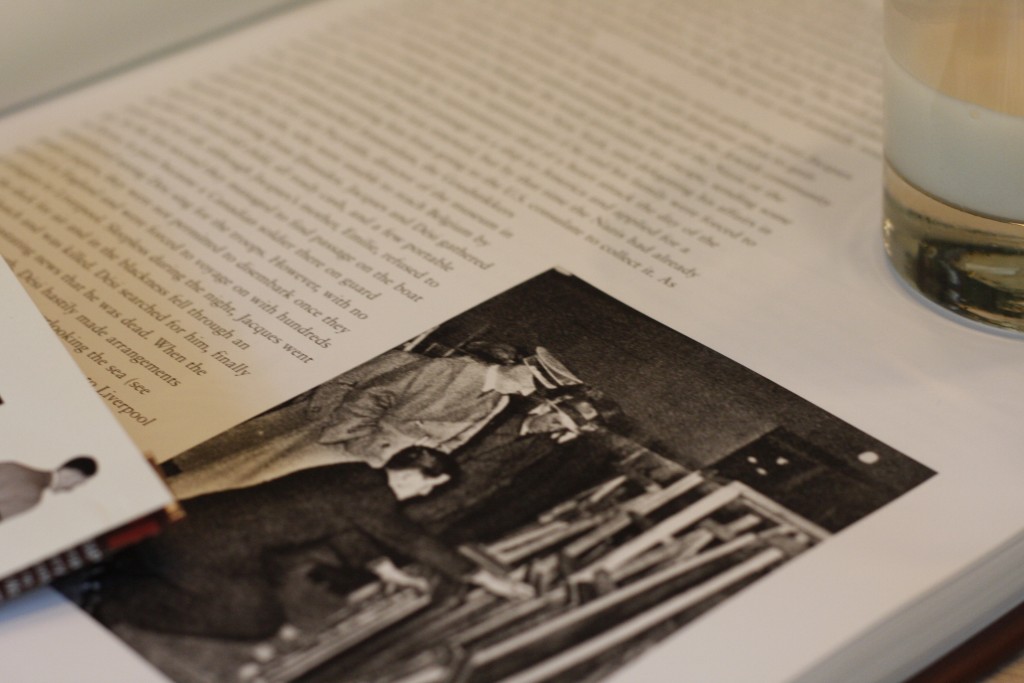Have a drink with: The Monuments Men
Artists, soldiers, detectives.
Ask them about: giving Dwight Eisenhower an art tour in a salt mine
First things first: why make a movie about these guys? Was art looting really a big deal in WWII?
It was a really big deal.
It’s easy to assume that the scattering and destruction of art was the unfortunate side effect of a very destructive European war. It wasn’t. Hitler knew what he was doing in going after art, and he wanted it to hurt conquered peoples very badly.
The Nazis created and supported specific infrastructure to target, hide, sell and destroy works of art, in each case as it most benefited the party agenda with money, power, property or prestige. Efforts were systematic, well-organized and brutal.
At its heart, the Nazi art campaign had a few high-level goals. First, Hitler wanted to get rid of so-called “degenerate” art, which he considered inappropriate and un-German. “Good” art was classical, Aryan and heroic (read: Ripped Blond Guys Go Hunting); while “bad” art – usually modernist – was the product of disordered minds and cultural influences. The Fuhrer did not like Abstract Expressionism.
Second, art looting was a particularly harsh element in the war against “inferior” peoples, a way to deprive European Jews of their cultural wealth and identity. The ERR (Einsatzstab Reichsleiter Rosenberg) was the German task force expressly tasked with carrying out Nazi cultural violence. Activities against Jewish and so-called “ownerless” material were carried out throughout Europe. Untold volumes of painting, sculpture, furniture and religious materials were confiscated and, if not destroyed or sold, sent to collecting points and storage areas throughout Europe.
Lastly, the Nazi party hoped through these looting efforts to gather art and wealth suitable to build a grand museum in the Austrian city of Linz, one of Hitler’s most ardent vanity projects. Hitler was so taken with the fantasy of a golden Nazi capital that he built and regularly fawned over a tiny model of the city.
By the mid 1940’s, German forces had not just shaken the Etch-a-Sketch of European culture, they had shaken it up, thrown it against the wall, left a giant footprint on the glass and then hidden it in the pit of a working salt mine.
Enter the Monuments Men, part of the Allies’ Monuments, Fine Arts and Archives division. These men and women were asked to protect, track, safeguard and return works of art stolen by the Nazis. Approximately 350 men and women originating from a dozen nations, many had significant art history or arts administration experience. Their activities involved tracking and recovery of looted artwork as well as the protection, examination and restoration of cultural sites on the front lines.
The Monuments Men were particularly active in Italy, which had become militarily messier towards the end of the war – for example, the heartbreaking destruction of the abbey at Monte Cassino on suspicions that Axis troops were using it as shelter. In Florence, where the survival of even the famous Ponte Vecchio bridge was at one point uncertain, returning Monuments Men were greeted with wild cheers as they drove trucks of art back into the city.
It was gratifying work, but difficult and stressful. The Monuments Men were known to have personal investment in their work and the disposition of “their” paintings; many people wondered why all this effort went into restitution when art could be part of reparation; and further, there were worries about the Russians recapturing a large volume of yet unevacuated material. The soldiers would often be given a matter of days to catalog and route hundreds of priceless items.
But despite narrow resources, a severe time crunch and little to no precedent for actions or rule making, during and after the last year of World War II the Monuments Men tracked, located and ultimately returned more than 5 million works of art. Some remained in Europe for up to 6 years following the conclusion of fighting to oversee complicated restitution matters.
Fun Facts:
The Nazis used famous sites including the Louvre, the Jeu de Paume and Neuschwanstein castle to store confiscated art. Less fancy storage sites included – as shown in the movie – salt mines.
Cate Blanchett’s character in the film would seem to be based on Rose Valland, a French art historian and member of the French resistance who, while employed at the Jeu de Paume, secretly recorded the whereabouts of stolen artwork.
Hermann Goering fancied himself an art collector, a modern-day Medici of sorts, and had a country estate called Carinhall that he stuffed with more than 1700 paintings. Gaudy is an understatement.
Hitler ran a 1937 Munich art exhibit featuring many of the “degenerate” works that had been confiscated from museums and collectors, hanging the pieces chaotically and covering the walls in mocking text. The exhibit was a huge hit.
Monuments Man Deane Keller, a Yale graduate and member of the school’s painting faculty, is buried at the Campo Santo in Pisa, where he poured himself into saving fire-damaged medieval frescoes.
Recommended reading:
The Rape of Europa – Lynn Nicholas’ book and the documentary it inspired are both fantastic. The film has some truly amazing footage of events like the return to Florence, and shows the horrifying extent of cultural destruction in Eastern Europe. It’s tons more suspenseful and dramatic than the Hollywood version!
Articles from the Getty and Smithsonian Magazine tell more about the real Monuments Men.
A 1950 video from British Pathe includes footage of the bombing of the abbey at Monte Cassino.
Restitution efforts continue thanks to groups like the London-based Central Registry.
A fantastic contemporary article from the Atlantic (October, 1946) explores Hitler’s ambitions for Linz.
